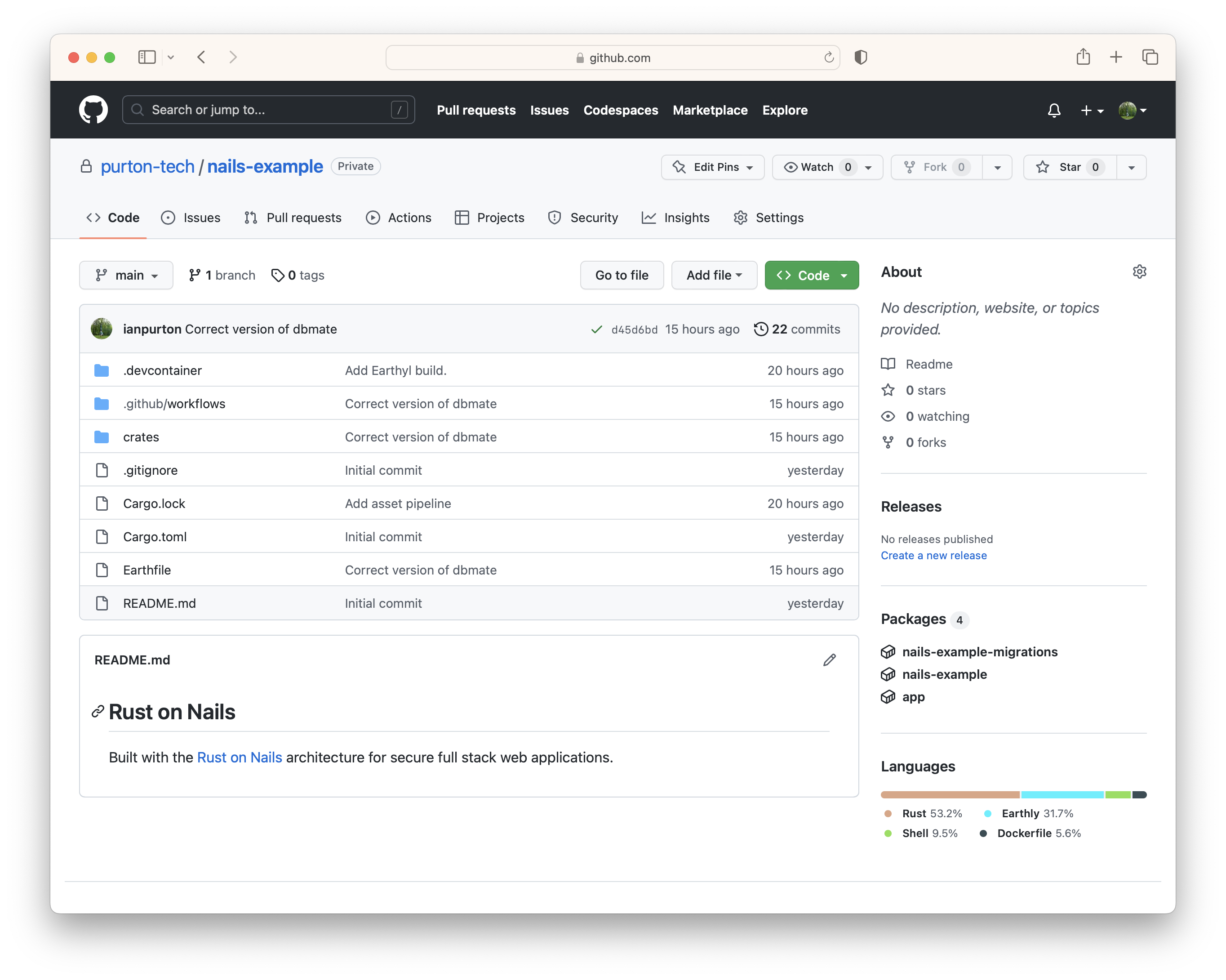Running CI on Github
We describe our container build in Rust with Dagger, so GitHub only needs to run the pipeline binary (cargo run -p infrastructure) to exercise the full stack in CI. Create .github/workflows/ci.yml with the workflow below.
Github Action
name: CI on: push: # build verification for commits landing on main branches: - main pull_request: # build verification for PRs that target main branches: - main jobs: build: runs-on: ubuntu-latest permissions: contents: read env: FORCE_COLOR: 1 steps: - name: Checkout uses: actions/checkout@v4 - name: Run build pipeline # reuses the Dagger build code from the infrastructure crate run: cargo run --release -p infrastructure -- build
- The workflow checks the repo out and runs on both pushes to
mainand pull requests targetingmain. - It runs the Rust pipeline from Build Our Containers (Dagger) directly with
cargo run -- buildso every CI run compiles the web server, WASM artifacts, and Tailwind output. - Because this workflow is purely for verification, it never authenticates to registries or publishes artifacts—those steps live in the dedicated release workflow.
Packages
The screenshot below shows how your Github repo should look after the pipeline has run.

